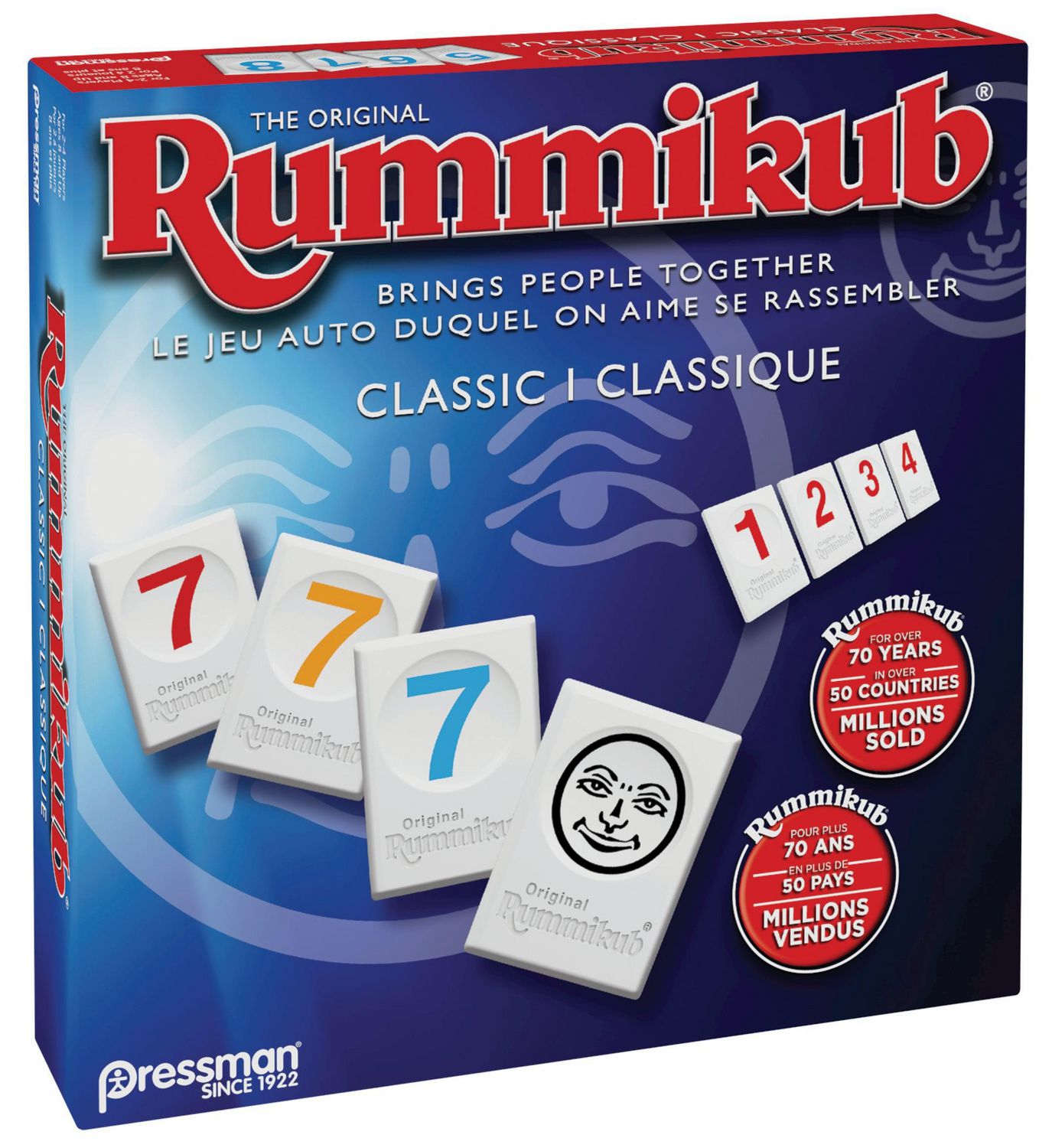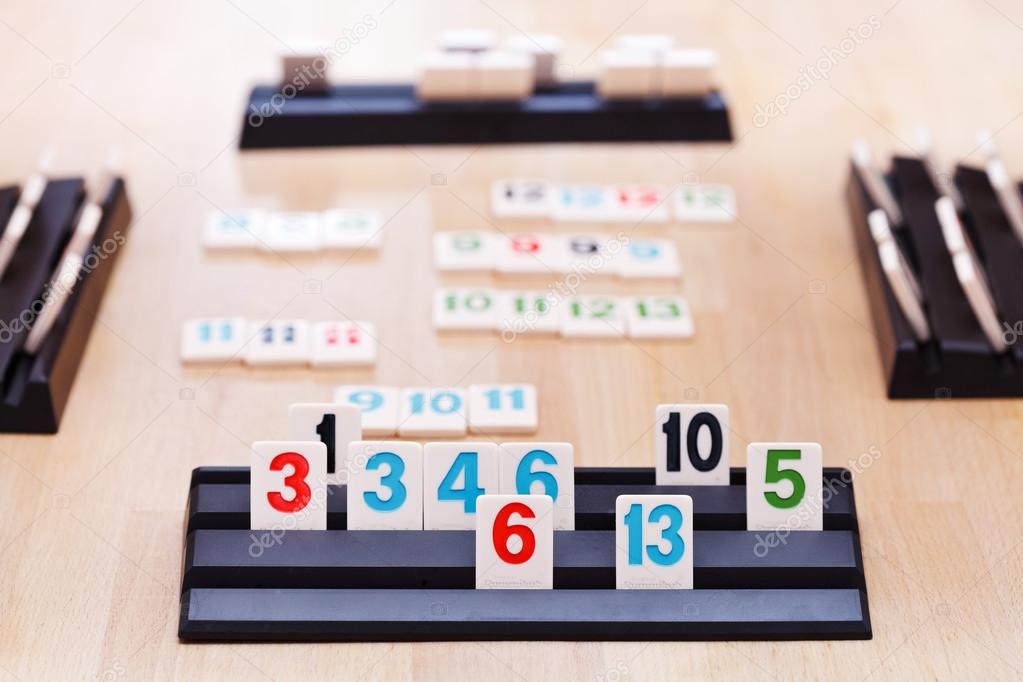Rummy Cup
The Rules of Rummikub
Rummikub® Rules. Rummikub® is a commercially-available tile rummy game developed by Israeli games inventor Ephraim Hertzano in the early 1930s.Even though this game is played with tiles rather than cards, this is a true Rummy game, featuring many of the elements common to all Rummy games, including the goal of making melds of three or more of a kind. Electrode, Comp-4f00a1fb-d597-44a8-ad4f-ba4cedad471a, DC-eus2-prod-a9, ENV-prod-a, PROF-PROD, VER-20.0.42, SHA-b0b214dbb2ff184c24c271bef207a1, CID-e457d6cd.
The rules of Rummikub are fairly simple to understand. The biggest issue with the game doesn't come from complicated game play or strategies; it lies simply in remembering what you can and can't do on a turn. Much like the card games gin, rummy and even solitaire, it's not a lack of expertise that will cause a loss. More likely, you'll find yourself in trouble if you're distracted and missing opportunities right in front of you.
When you first sit down to play Rummikub (two to four players are recommended), you'll dump the numbered, multi-colored tiles on the table face-down. Each player will draw one tile; the highest number goes first, and the 1 tile is always low. (Return those tiles randomly to the table.) Each player will then draw 14 tiles from the table, placing them on their rack; whatever is left forms the pool. On the first turn, each player will attempt to make a set of one or more groups or runs that adds up to at least 30 points.
Advertisement

Advertisement
A group is formed when three or four tiles of the same numbers are put together; like suits in a deck of cards, each number will have a different color. A run is formed when three or more numbers of the same color are played together. Playing a group or a run makes a set (sometimes called a meld). So on your first turn, you must lay either groups or runs that add up to at least 30 points. If your tiles aren't cooperating, no worries: You can take a tile from the pool in the hopes it'll help you snag a 30-point set to get you in the game. You can't play the drawn tile until the next turn, however — this goes for any tile drawn during the game.
From there, it's your job on every turn to scope out places where your tiles can add to a run or a group. This is called melding. A few ways to meld:
- Add a tile to an existing run or group.
- Take the fourth tile from a run or group to complete your own set or add a fourth to another group and take another tile to create a new set.
- Split a run. For instance, a run of 4, 5, 6, 7, 8 is on the table. You take a six from your rack and create a 4, 5, 6 run and make the remaining 6, 7, 8 its own run.
The object of the game is to place all your tiles on the table as part of a set. Once someone does that, that person can proclaim 'Rummikub.' The losers add up the value of the tiles they're still holding on their racks, and that score is written as a negative number. The winner gets a positive score that equals the total of all the losers' negative points.
No doubt you'll want to play more than one round, so keep track of all the scores. Whoever has the most positive points at the end of play wins.
Rummikub is a tile-based game for 2 to 4 players, combining elements of the card game rummy and mahjong. There are 106 tiles in the game, including 104 numbered tiles (valued 1 to 13 in four different colors, two copies of each) and two jokers. Players have 14 or 16 tiles initially and take turns putting down tiles from their racks into sets (groups or runs) of at least three, drawing a tile if they cannot play. In the Sabra version (the most common and popular), the first player to use all their tiles scores a positive score based on the total of the other players' hands, while the losers get negative scores. An important feature of the game is that players can work with the tiles that have already been played.
History[edit]

Rummikub was invented by Ephraim Hertzano, a Romanian-born Jew, who immigrated to pre-state Israel in the 1940s. He hand-made the first sets with his family in the backyard of his home. Hertzano sold these sets door-to-door and on a consignment basis at small shops. Over the years, the family licensed it to other countries and it became Israel's best selling export game. In 1977, it became a bestselling game in the United States.[1][2] The game was marketed as 'Rummikid' during part of the 1970s.[citation needed]
Hertzano's Official Rummikub Book, published in 1978, describes three different versions of the game: American, Sabra, and International. Modern Rummikub sets include only the Sabra version rules, with no mention of the others, and there are variations in the rules between publishers. The game was first made by Lemada Light Industries Ltd, founded by Hertzano in 1978.
Rummikub is similar to several central European card games which are played with two decks of playing cards, including Machiavelli and Vatikan. Vatikan is played with two decks of cards and one joker per player, thus making 106 cards for two players.[3]
Game pieces[edit]
Rummikub's main component is a pool of tiles, consisting of 104 number tiles and two joker tiles. The number tiles range in value from one to thirteen in four colors (blue, red, orange,[4] and black). Each combination of color and number is represented twice. Players each have a rack to store tiles without revealing the face of the tiles to the other players.
Rules[edit]
The following explanation is based on the rules in the 1998 Pressman American edition:
Setup[edit]
Tiles are shuffled together and either placed into a bag or spread out face down across the table. Each player draws and reveals one tile. The player whose tile has the highest number value will start the game. Tiles are returned to the pool, and players collect 14 random tiles and arrange them on their racks. Play begins with the starting player and proceeds in a clockwise (for modern variants) direction.
Play[edit]
For a player's first move, they must play a set (or sets in some versions) with a value of at least 30 points. Point values are taken from the face value of each tile played, with the joker (if played) assuming the value of the tile it is being used in place of. A player may not use other players' tiles to make the 'initial meld'. If a player cannot make an initial meld, they must pick up a single tile from the pool and add it to their rack. Play then proceeds to the next player.

Once a player has made their initial meld, they can, on a separate turn, play one or more tiles from their rack, making or adding to groups and/or runs. If the player cannot (or chooses not to) play any tiles, they must pick a tile randomly from the pool and add it to their rack.
Players may not make their initial meld and along with that play on groups and runs during the same turn. You can play on runs and groups after the turn of making the initial meld.
Players may play tiles by amending sets already in play. The only limit to the length of a run is the extremes of the tile values. Groups are limited to four because colors may not repeat within a group.
Sets[edit]
All tiles in play must be arranged in sets of at least three tiles. The two valid set types are called runs and groups.
A run is composed of three or more, same-colored tiles, in consecutive number order. (A 1 may not follow a 13.)
| Example run: | 9 11 |
A group is made from three or four same-value tiles in distinct colors. For example: red 3, blue 3, black 3 and orange 3.
| Example group: | 7 7 |
Examples of invalid sets[edit]
| Invalid because numbers are not consecutive: | 2 |
| Invalid because numbers in a run must all be the same color: | 1 3 |
| Invalid because colors may not repeat in a group (but house rules may allow this): | 1 |
Example of play[edit]
| Tiles already out-played: | 3 5 |
| Own tiles: | 5 |
| Recombined result: | 2 4 and 5 |
Manipulating existing tiles[edit]
During a player's turn, sets of tiles that have already been played may be manipulated to allow more tiles to be played. At the end of the turn, all played tiles must be in valid sets.
- Shifting a run
- Players may add the appropriate tile to either end of a run and remove a tile from the other end for use elsewhere. If red 3, 4, and 5 have already been played, a player may add the red 6 to the end and remove the 3 for use elsewhere.
- Splitting a run
- Players may split long runs and insert the corresponding tiles in the middle. Thus, if blue 6, 7, 8, 9, and 10 are already a run, the player may insert his own 8 to make two runs: 6, 7, 8 and 8, 9, 10.
- Substituting in a group
- Players may replace any of the tiles in a three-tile group with a tile of the fourth color and the same value. If blue 6, red 6, and orange 6 are already a group, the player may add the black 6 and remove any one of the other three for use elsewhere.
- Removing tiles
- So long as the remaining tiles form a valid run, tiles can be removed from the ends of runs. Any one tile may be removed from a four-tile group.
- Joker substitution
- A joker may be retrieved before the initial meld. A joker can be retrieved from a set by replacing it with a tile of the same numerical value and colour it represents. The tile used to replace the joker can come from the player's rack or from the table. In the case of a group of 3, the joker can be replaced by the tile of either of the missing colours. A joker that has been replaced must be used in the player's same turn as part of a new set. A set containing a joker can have tiles added to it, be split apart or have tiles removed from it. The joker can be moved or replaced in any possible way as long as you maintain a set of at least three tiles. The joker has a penalty value of 30 points if it remains on a player's rack at the end of the game[5]
- Harvested tiles
- In the course of a turn, a tile that is 'harvested' from an existing set must be played during the turn; it cannot be kept for later use. Example: if there is a 3, 4, 5 run on the table, the 3 can be harvested by putting down the appropriately colored 6, but the 3 must be used during that turn, not kept in the player's hand for later use.
Scoring[edit]
Once a winner has been declared, the losing players must add up the values of the tiles remaining in their racks (their score for the game). The joker has a penalty value of 30. A player's score for the game is subtracted from his current cumulative score. Once calculated, each of the losing players' scores for the game is added to the winners current cumulative score.
For example- suppose in a game player A wins, player B has a score of 5, player C has a score of 10 and player D a score of 3. Player A will now have a cumulative score of 18, player B will be −5, player C will be −10 and player D will be −3.
Should the game result in no winner, the player with the lowest number of tiles in their rack is the winner. Scoring is then carried out in the normal manner.

If one person never had the required points to make a meld and the game is over, their points are added to the score of each of the other players. The person with the least number of points is the winner.
Winning[edit]
Game play continues until a player has used all of the tiles in the rack, at which point they should call out 'Rummikub,' and are declared the winner. If the pool runs out of tiles, play continues until there is a winner or no player can make a valid play.
Awards[edit]
- 1980 Spiel des Jahres (German Game of the Year)[6]
- 1983 Spel van het Jaar (Dutch Game of the Year)[citation needed].
- 1993 Gra Roku [pl] (Polish Game of the Year)
See also[edit]
Rummy Cup Spielen Kostenlos
References[edit]
- ^'Rummikub: Old Memories'. www.skooldays.com. Retrieved 2015-11-30.
- ^'Rules of the Games: Rummikub'.
- ^McLeod, John. 'Manipulation Rummy, Machiavelli, Carousel, Vatikan, Shanghai'. Pagat. Retrieved 9 October 2015.
- ^Official Game Rules
- ^Official Rummikub Manual(2017), https://rummikub.com/wp-content/uploads/2019/12/2600-English.pdf
- ^'Spiel des Jahres 1980: Rummikub' (in German). Spiel des Jahres. Retrieved 9 June 2012.